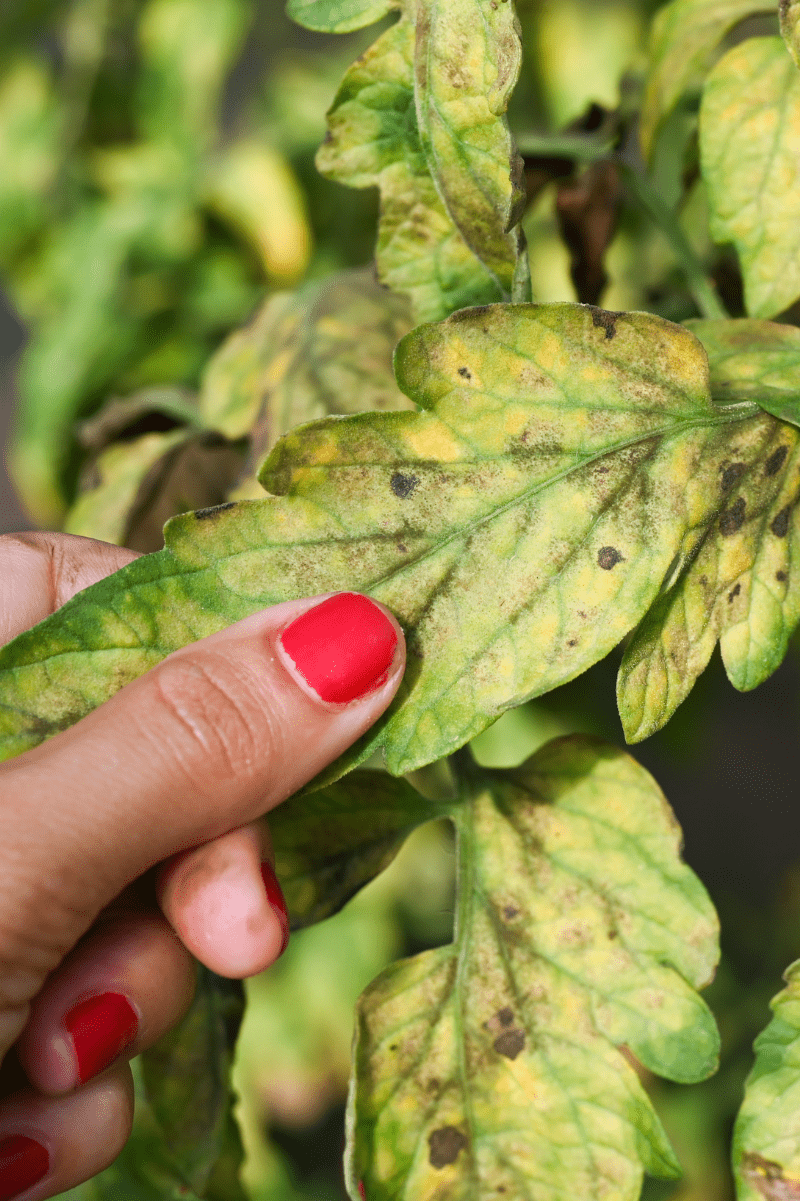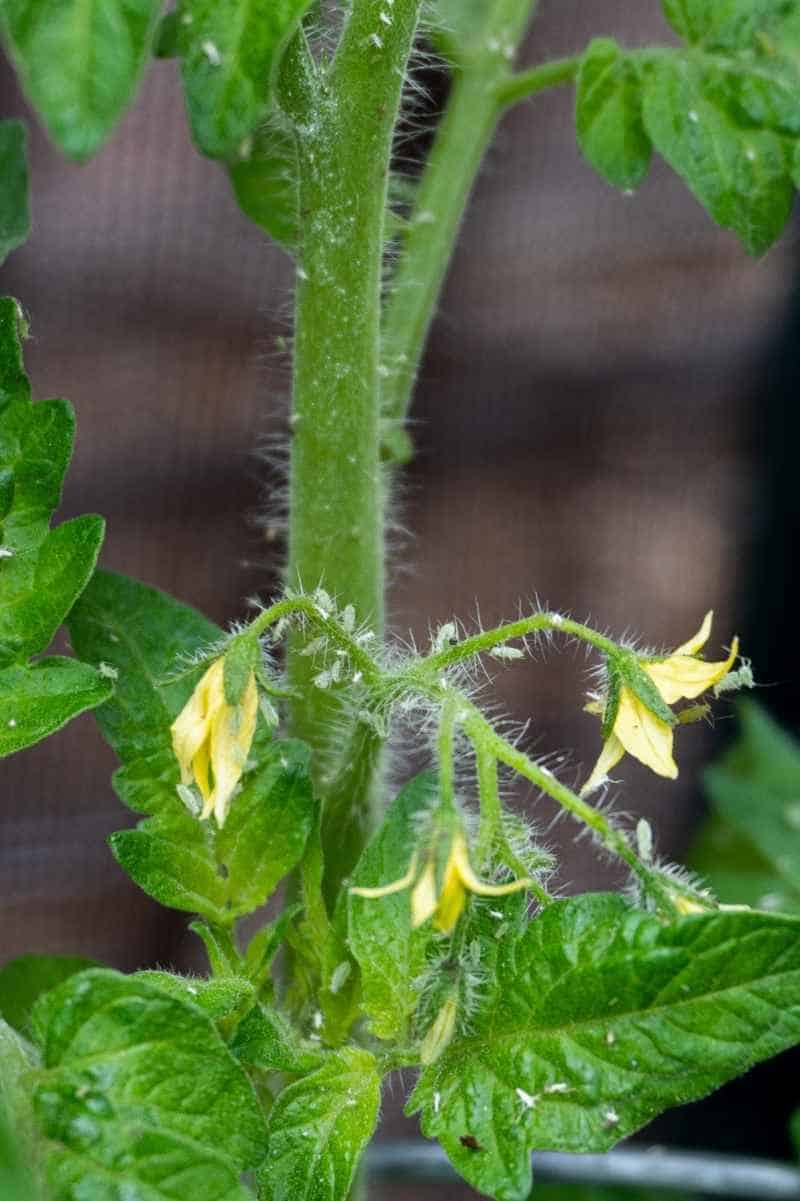No matter what kind of tomato you’re growing, there may come the point where the tomato plant leaves are turning yellow. Want to know why and how to fix it? Let’s talk about it!
Most common cause
The most common reason for tomato leaves turning yellow is inconsistent watering. Both too much water and under-watering can turn a plant’s leaves yellow.
Remember that tomato plants require soil with consistent moisture. When it is hot out, aim to water the tomato plants every two to three days, giving them about an inch of water total per week. Mulch will help the soil retain water.
When watering the plants, keep your stream from the hose near the base of the plant and water deeply. Avoid getting water droplets on the leaves to prevent disease. Drip irrigation is also a great option!
Other Causes – Environmental
Lack of Nitrogen. Tomato plants are heavy feeders and need supplemental fertilizer throughout the growing season. Nutrient deficiencies can be easy to fall into with vegetables with heavy needs, especially a nitrogen deficiency. Amend the beds with compost before planting. Once the tomato seedlings are in the ground, switch to a liquid fertilizer such as a fish emulsion and liquid kelp every two weeks to feed your plants. Be careful not to oversupply the plants with nitrogen, as it can stunt fruit growth if there’s too much added.
Lack of Sunlight. If just the lower leaves of the plant are turning yellow, the plant may need more sunlight. With raised bed or in-ground gardening, this one is hard to correct during the growing season. But if you are growing in containers, you can move the pot to a sunnier spot.

Other causes—Pests and Diseases
- Early blight—Yellowing leaves with small black spots that progress outwards can be a sign of early blight. Affected plants will drop leaves until there are very few left. Early blight is caused by a fungus that can overwinter in the soil. You can treat infected plants with a fungicide. Proper crop rotation and mulching can cut down on this disease.
- Viruses—These can include fusarium wilt, verticillium wilt, and others. They can cause spots, stripes, or odd patterns on your tomatoes. Stress due to lack of water, temperatures, or poor soil nutrition can lead to viral diseases. Using neem oil spray can help treat viral diseases, but it’s best to prevent it by fertilizing your soil and watering consistently.
- Aphids— Small flying insects that suck the sap out of young plants, causing them to wilt and become deformed. You can discourage aphids by using yellow sticky traps, spraying your plants with a garlic or hot pepper spray, and using neem oil. Attracting lacewings and ladybugs will also cut down on aphid populations.
- Spider Mites—Pale yellow spots on the tops of leaves can be a sign of spider mites, and lots of webbing around the plant is definitely a sign of spider mites. A spray of water to the leaves can help reduce the numbers. If the infestation becomes overwhelming, try insecticidal soap.
- Whiteflies—Whiteflies suck sap out of tomato leaves, which eventually turns the leaves yellow before they die. Sticky whitefly traps can be a good option for minor infestations, for a larger problem, a regular spraying of insecticidal soap may help.








